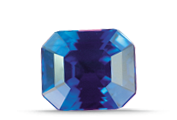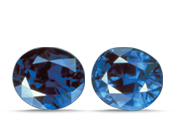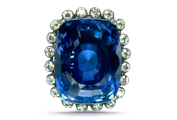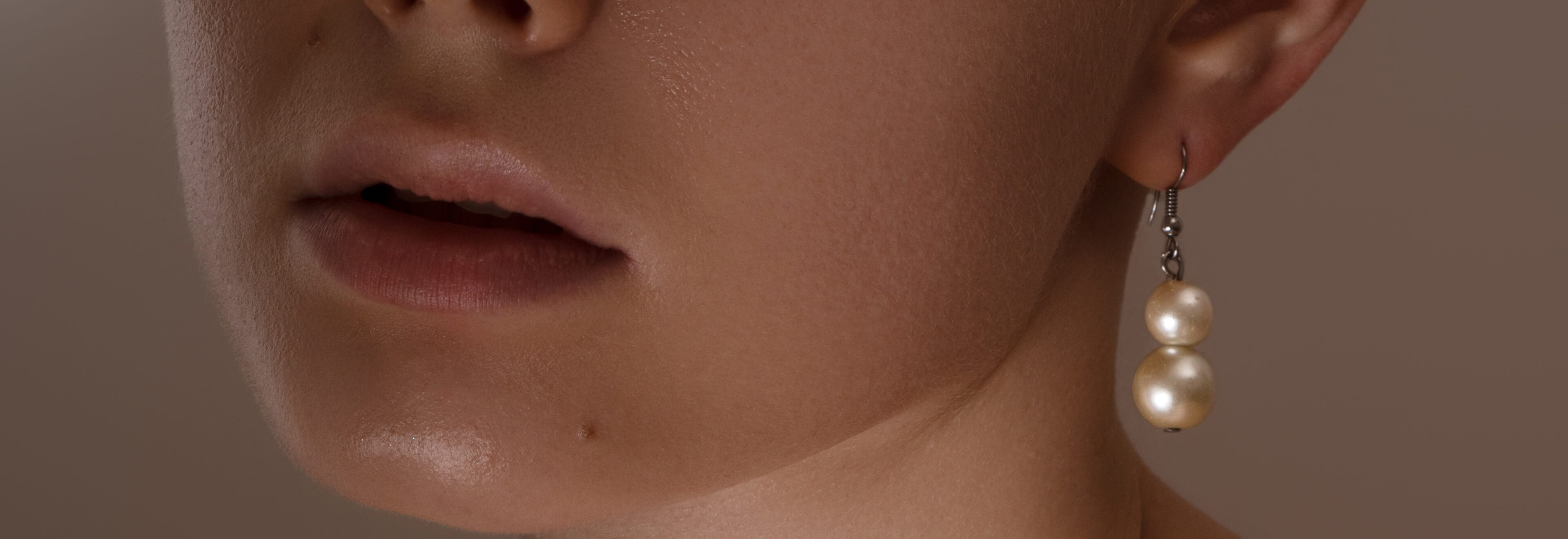Blue Sapphire belongs to the mineral species corundum. It can be a pure blue but ranges from greenish blue to violetish blue. The name "sapphire" can also apply to any corundum that's not red and doesn't qualify as ruby, another corundum variety.
OVERVIEW - SAPPHIRE
Most of us got to know Sapphire from the world's most famous engagement ring - Kate Middleton's and Princess Diana's blue Sapphire ring. Besides blue, the corundum family also includes so-called "fancy sapphires" that come in violet, green, yellow, orange, pink, purple, and intermediate hues.
Both blue and fancy sapphires come from a variety of exotic sources, including Madagascar, Tanzania, Sri Lanka, Myanmar, and Australia.
QUALITY FACTORS
-

COLOR
Sapphires come in a variety of colors. Preferred sapphires have strong to vivid color saturation, regardless of hue.
-

CLARITY
Blue sapphires typically have some inclusions, but they generally have better clarity than rubies.
-

CUT
Sapphire is often cut with a brilliant pattern on the crown and a step cut pattern on the pavilion.
-

CARAT WEIGHT
Blue sapphires range in size, and large blue sapphires are more readily available than large rubies.
THE COLOR OF SAPPHIRE
Sapphire is generally known as a blue gemstone but surprisingly it comes in a wide range of colors and quality variations. In general, the more intense and uniform the color is, the more valuable the stone. Intensely saturated and velvety, rare sapphires from Kashmir set the standard for blue. Sapphire's blue can be vivid and saturated like it's lit from within.
Sapphires come in every color except red (which is a ruby). Fancy sapphires are generally less available than blue ones, and some colors are scarce, especially in very small or very large sizes. Still, fancy sapphires create a rainbow of options for people who like the romance associated with this gem, but who also want something out of the ordinary.
PADPARADSCHA SAPPHIRE
An extremely rare and collectible variety that is a mix of pink and orange is known in the trade as padparadscha. Such gems typically have a high value—much higher than many other types of fancy sapphires. Their color can be hard to describe. Some people say padparadscha sapphire colors should be called salmon or sunset. But the word padparadscha itself derives from the Sanskrit language and refers to the rich color of a lotus blossom.
SAPPHIRE CLARITY
Blue sapphires typically have some inclusions, but they generally have better clarity than rubies. Blue sapphires with extremely high clarity are rare, and very valuable.
Generally, inclusions make a stone less valuable. Price can drop substantially if the inclusions threaten the stone’s durability. Even so, inclusions can actually increase the value of some sapphires. Many of the most valuable Kashmir sapphires contain tiny inclusions that give them a velvety appearance. They scatter light, causing the coveted visual effect without negatively affecting the gem’s transparency.
ASLOWE SAPPHIRES
Aslowe sapphire products are made from high-quality natural sapphires selected by our gemological experts for their brilliance and remarkable color spectrum ranging from white, yellow, orange, pink, purple, to their most signature shades of blue.
SAPPHIRE TRIVIA
Sapphire is the birthstone for September and the gem of the 5th and 45th anniversaries.
SAPPHIRE CARE
Sapphire is tough and durable under normal wearingconditions. Wipe it clean with a soft cloth after wear and store it in your Aslowe jewelry box or pouch. Avoid exposure to sharp objects, heat, perfume orcosmetics.
Read more about sapphire from GIA gem encyclopedia.
Source: www.gia.edu/sapphire







